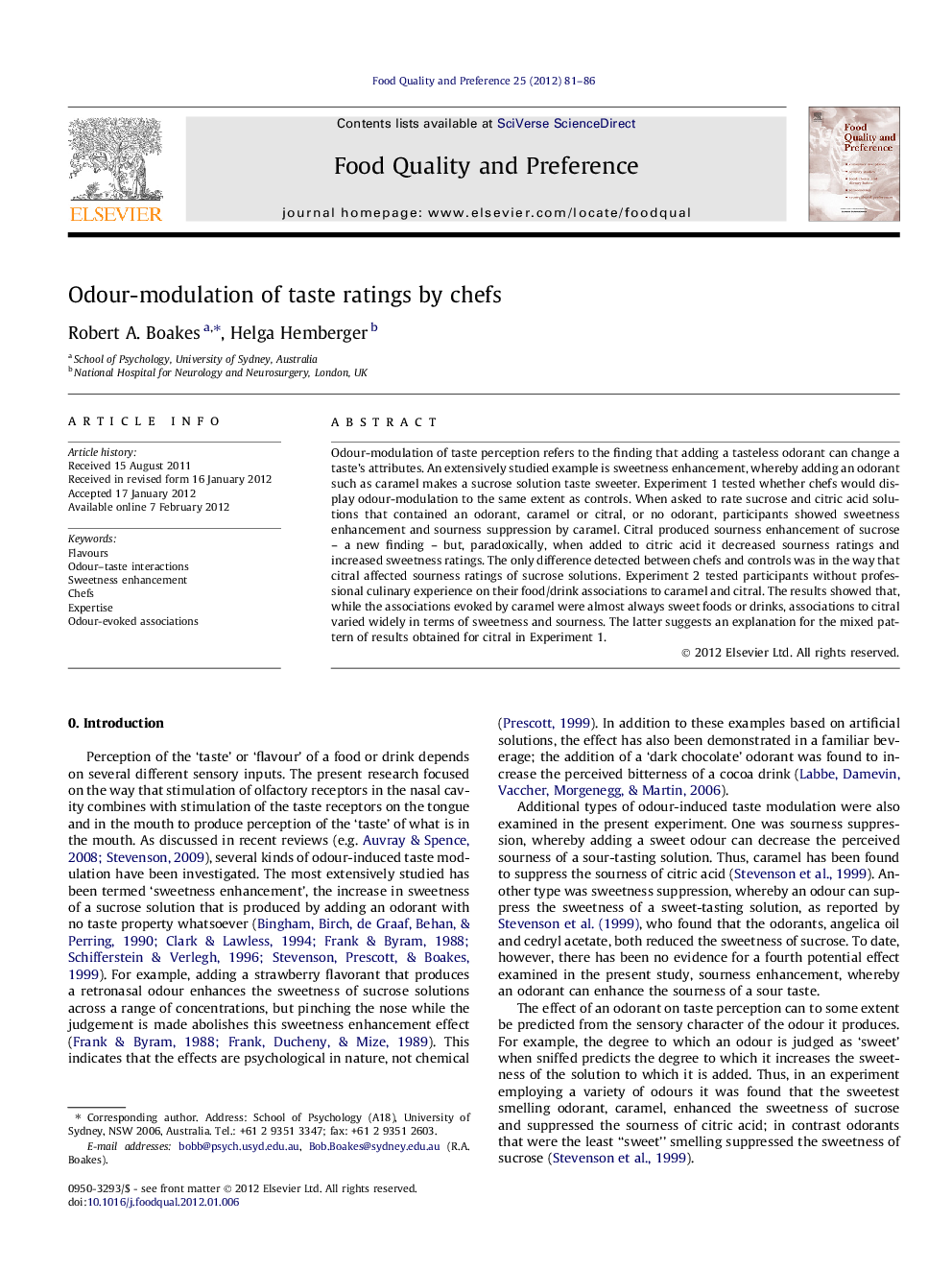| Article ID | Journal | Published Year | Pages | File Type |
|---|---|---|---|---|
| 4317562 | Food Quality and Preference | 2012 | 6 Pages |
Odour-modulation of taste perception refers to the finding that adding a tasteless odorant can change a taste’s attributes. An extensively studied example is sweetness enhancement, whereby adding an odorant such as caramel makes a sucrose solution taste sweeter. Experiment 1 tested whether chefs would display odour-modulation to the same extent as controls. When asked to rate sucrose and citric acid solutions that contained an odorant, caramel or citral, or no odorant, participants showed sweetness enhancement and sourness suppression by caramel. Citral produced sourness enhancement of sucrose – a new finding – but, paradoxically, when added to citric acid it decreased sourness ratings and increased sweetness ratings. The only difference detected between chefs and controls was in the way that citral affected sourness ratings of sucrose solutions. Experiment 2 tested participants without professional culinary experience on their food/drink associations to caramel and citral. The results showed that, while the associations evoked by caramel were almost always sweet foods or drinks, associations to citral varied widely in terms of sweetness and sourness. The latter suggests an explanation for the mixed pattern of results obtained for citral in Experiment 1.
► Four types of odour-modulation of tastes were studied using non-student participants. ► Chefs showed odour-modulation of tastes to a similar degree as non-professionals. ► Citral produced paradoxical changes in the tastes of sucrose and citric acid. ► Food associations to citral odour varied in sweetness and sourness much more than those to caramel.
